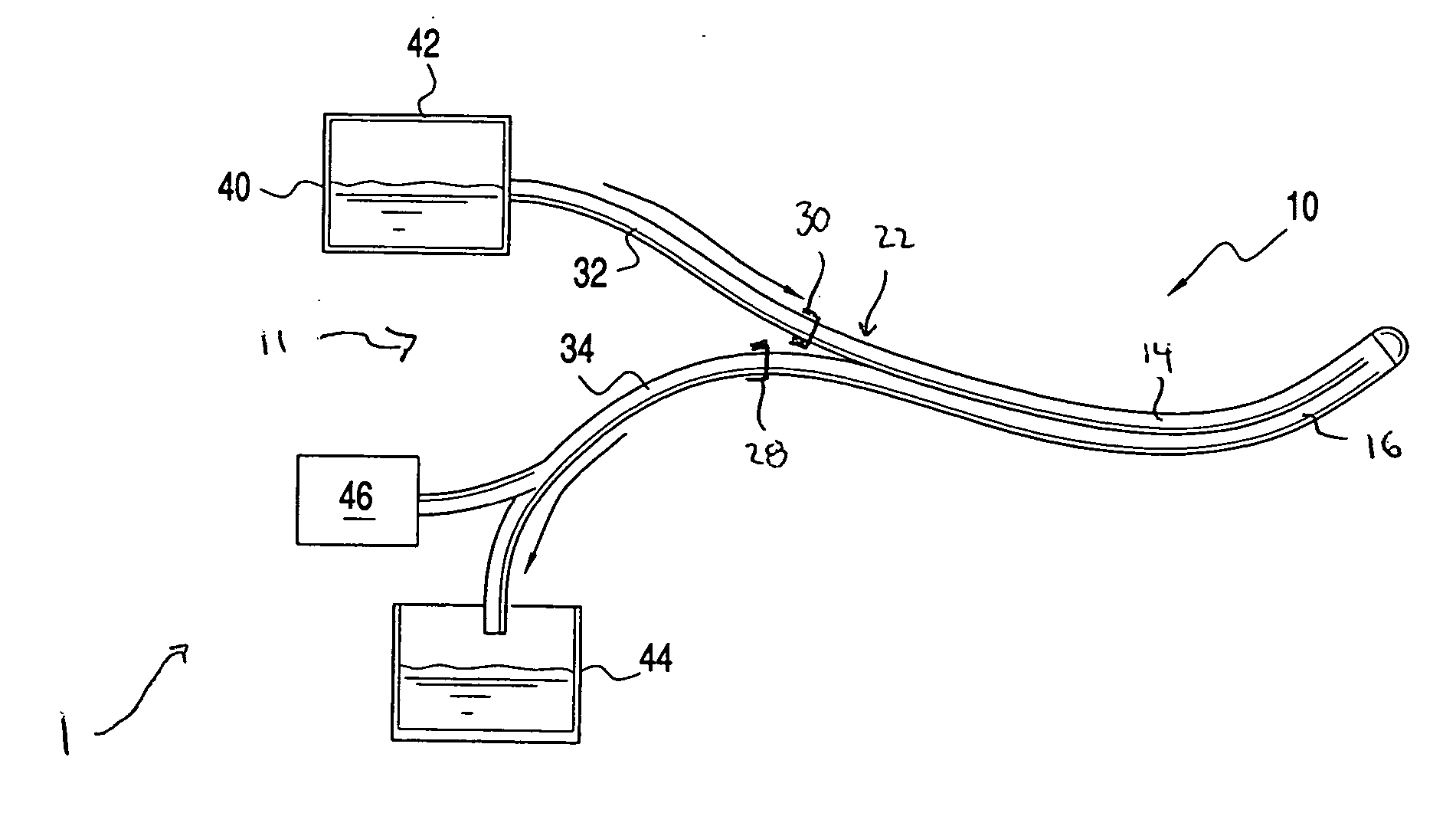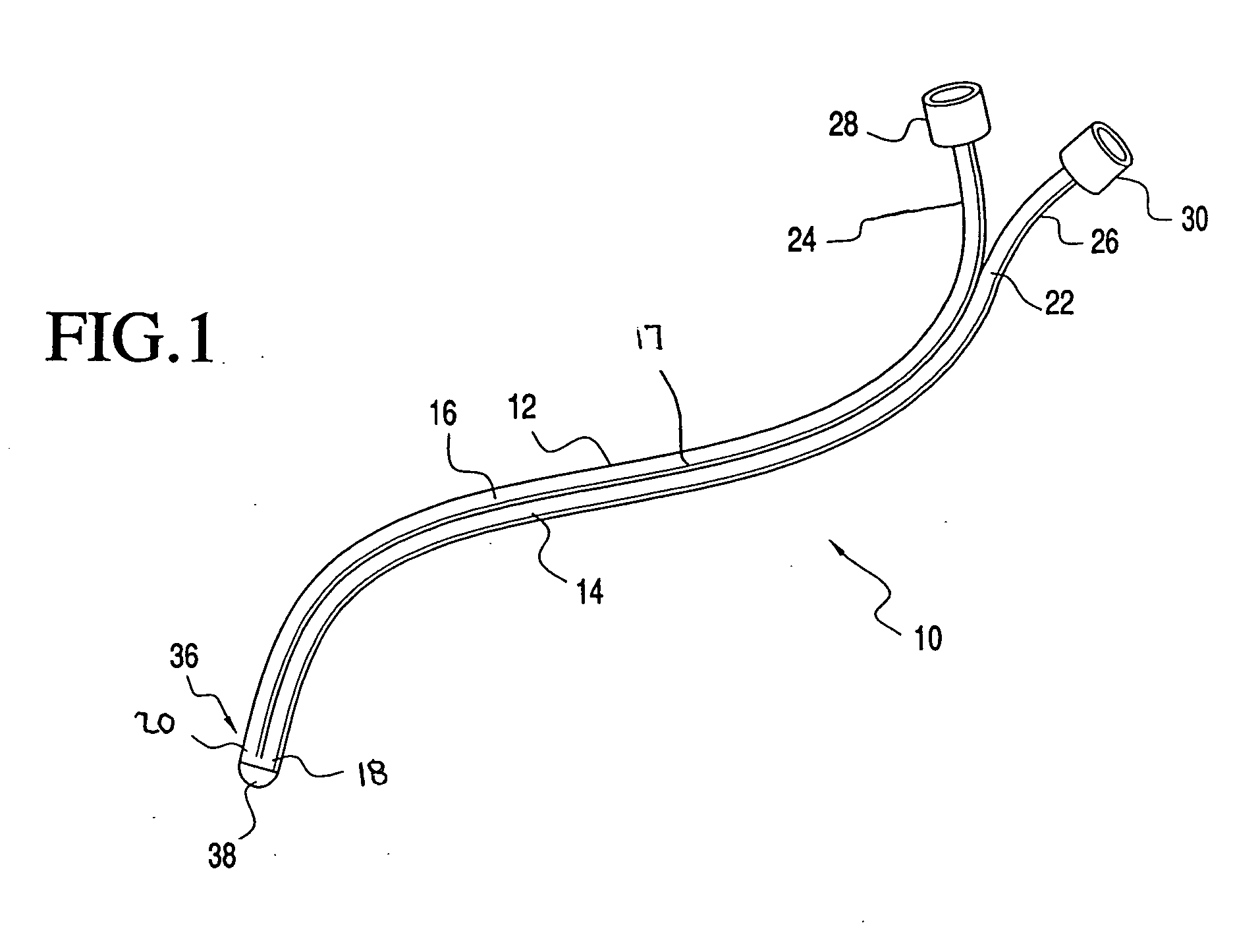Intra-thecal catheter and method for cooling the spinal cord and brain
a technology of spinal cord and catheter, which is applied in the direction of therapeutic cooling, optical conversion of sensor output, contraceptive devices, etc., can solve the problems of high mortality, serious paraplegia, and serious paralysis
- Summary
- Abstract
- Description
- Claims
- Application Information
AI Technical Summary
Benefits of technology
Problems solved by technology
Method used
Image
Examples
Embodiment Construction
[0024] The detailed embodiments of the present invention are disclosed herein. It should be understood, however, that the disclosed embodiments are merely exemplary of the invention, which may be embodied in various forms. Therefore, the details disclosed herein are not to be interpreted as limited, but merely as the basis for the claims and as a basis for teaching one skilled in the art how to make and / or use the invention.
[0025] With reference to FIGS. 1 to 6, a method and apparatus for intra-thecal cooling is disclosed. The method and apparatus provide an effective mechanism for cooling the spinal cord in an effort to reduce the spinal ischemia. Generally, the present intra-thecal cooling catheter system 1 includes a closed-loop, cooling catheter 10 coupled to a cooling system 11 coupled to the catheter 10.
[0026] With regard to the intra-thecal cooling catheter 10 of the present invention, it is generally a dual lumen polyurethane catheter with a 50 / 50 split. That is, the cathe...
PUM
 Login to View More
Login to View More Abstract
Description
Claims
Application Information
 Login to View More
Login to View More - R&D
- Intellectual Property
- Life Sciences
- Materials
- Tech Scout
- Unparalleled Data Quality
- Higher Quality Content
- 60% Fewer Hallucinations
Browse by: Latest US Patents, China's latest patents, Technical Efficacy Thesaurus, Application Domain, Technology Topic, Popular Technical Reports.
© 2025 PatSnap. All rights reserved.Legal|Privacy policy|Modern Slavery Act Transparency Statement|Sitemap|About US| Contact US: help@patsnap.com



